
A storm system will slowly continue to press across the central U.S. Friday and Saturday with widespread showers and thunderstorms. Slight risks for severe thunderstorms and excessive rainfall have been issued Saturday from the Ozarks into the mid-Mississippi River Valley with potential for damaging winds, large hail, tornadoes, and flash flooding. Read More >
For 25 years, safety advocates have tracked child deaths caused by pediatric vehicular heatstroke. On average, one child dies from heatstroke nearly every 10 days in the United States from being left in a car or crawling into an unlocked vehicle. What is most tragic is that every single one of these deaths could have been prevented. The U.S Department of Transportation's National Highway Traffic Safety Administration (NHTSA) is working with the National Weather Service to urge parents and caregivers to learn about and share critical information about the dangers of leaving children alone in hot cars. Share this lifesaving message with everyone you know: Look Before You Lock. For the most recent data on vehicular heatstroke, visit noheatstroke.org.
Total number of U.S. pediatric vehicular heatstroke deaths - 2023: 2
Total number of U.S. pediatric vehicular heatstroke deaths - 2022: 33
Total number of U.S. pediatric vehicular heatstroke deaths - 1998-2023: 942
Average number of U.S. child heatstroke deaths per year - 1998-2022: 38
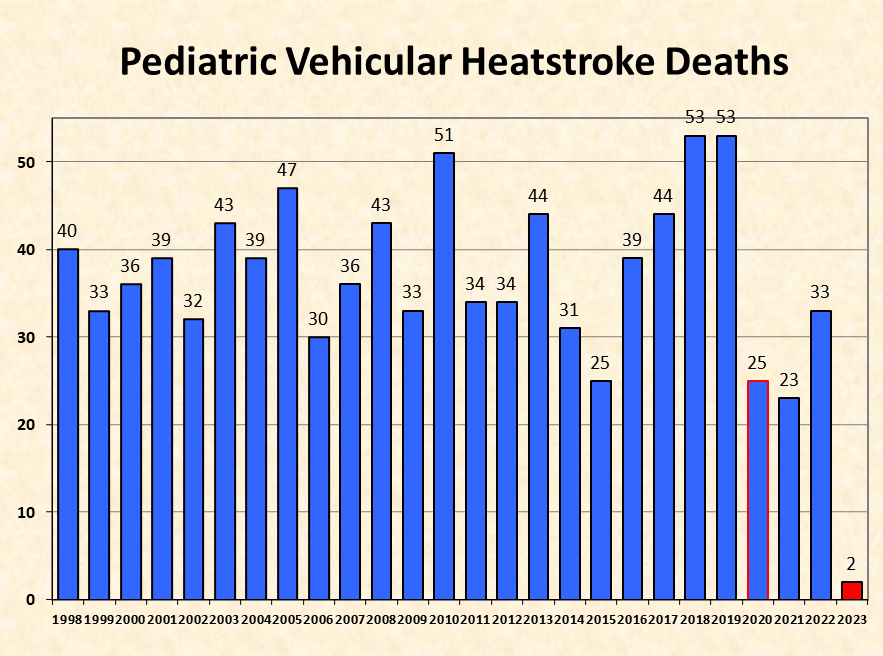
Graph last updated April 3, 2023
Source: Jan Null, CCM, Department of Meteorology and Climate Science, San Jose State University, http://noheatstroke.org
Pediatric Vehicular Heatstroke Deaths: By the Numbers
The death rate has been lower in recent years, which is likely due to more families being at home and routines drastically changed. Still, an average of 38 children died each year as a result of heatstroke. Since 1998, 23 children in Kentucky, and 15 in Indiana, have died from vehicular heatstroke.

Texas and Florida have the most pediatric vehicular heatstroke deaths since 1998. However, on a per capita basis, Kentucky ranks 43rd in deaths (higher rank is worse), with 27.6 deaths per 1,000,000 children 14 years old or younger. The only states with a higher per capita death ratio than Kentucky are New Mexico, Florida, Arkansas, Arizona, Alabama, Oklahoma, and Louisiana. The national average is 15.4 deaths per 1,000,000 children 14 years old or younger.

Pediatric vehicular heatstroke (PVH) is the leading cause of death for non-crash vehicular deaths among children in the United States. Since 1998, the majority (52.6%) of these tragedies occur when a child is “forgotten” by a parent or caregiver and left in a hot car, and more than half (58%) occur at a home. A busy parent or caregiver may unintentionally forget that a quiet or sleeping child, who may also be facing the back of the car, is in the back of the vehicle. Nearly one-third of these accidents occur with children under one year of age.
U.S. PVH deaths have occurred in each month of the year, but the majority of cases happen in the summer months (Jun-Aug).
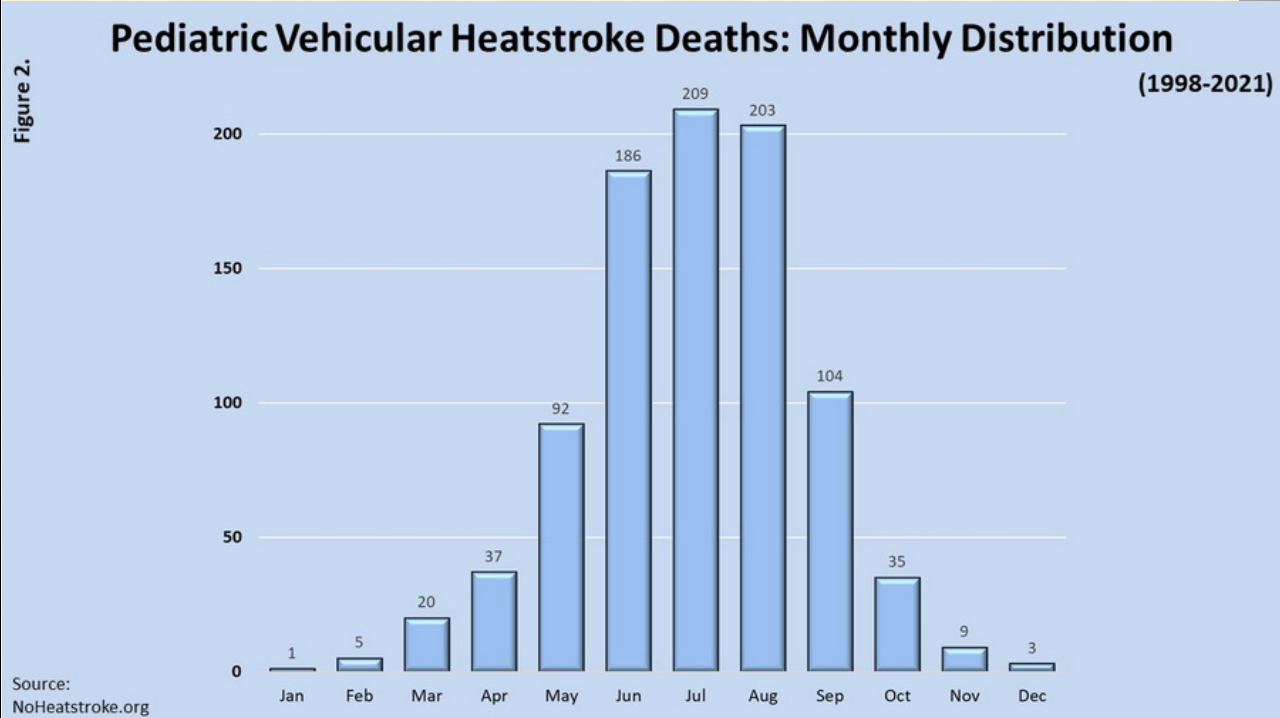
“Gained access” circumstances account for about one-quarter of child heatstroke fatalities. Toddlers and young children are also at risk of vehicular heatstroke, and they are more likely to gain access into a vehicle. Some children gain access into a vehicle without the knowledge of an adult and may be unable to exit the car, especially if child locks are activated.
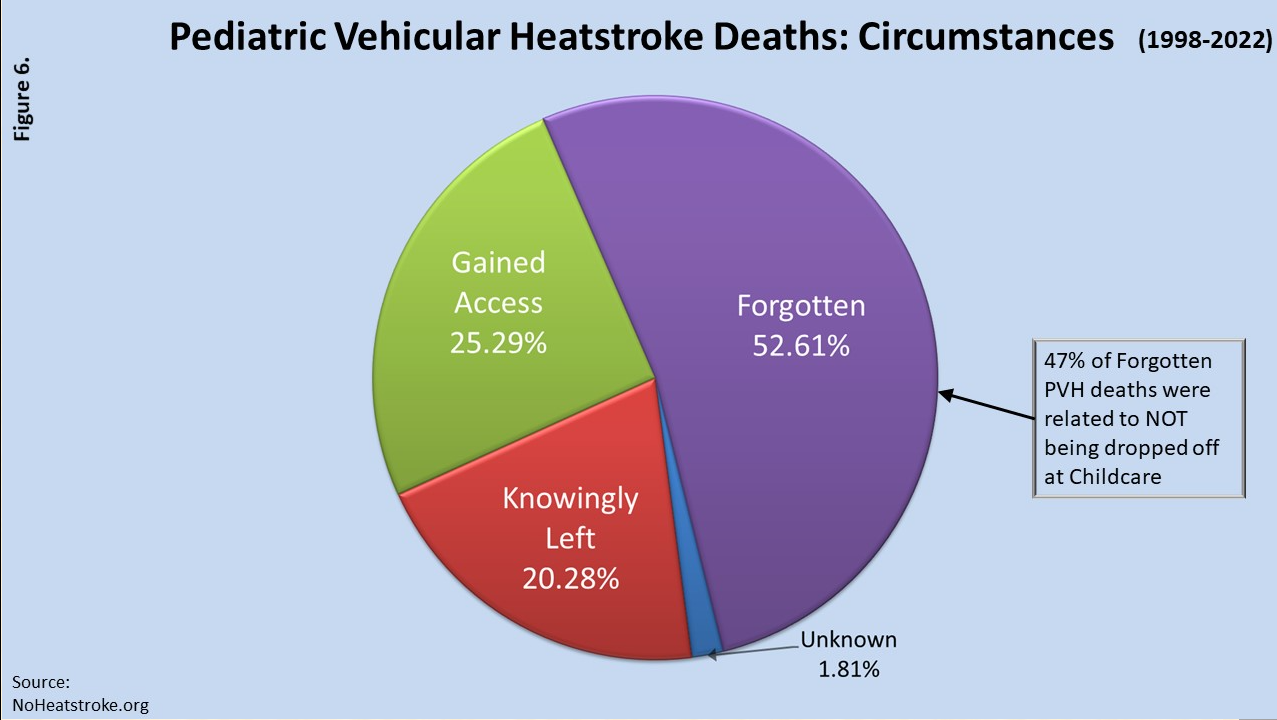
Sometimes, children are left intentionally by parents who do not understand the dangers of a hot vehicle, or who may not understand how quickly a vehicle can heat up to dangerous temperatures. It cannot be overstated: Never leave your child in a vehicle alone, not even for a minute.
The majority of PVH deaths involve children under the age of 2 years old, with the average age being 27 months old. This is because young children often fall asleep in their rear acing car seat, making it even easier to forget your child in the backseat. However, most of the "Gained Access" cases involved children ages 2-4 years old. The children that have died from vehicular heatstroke in the United States (1998-2022) have ranged in age from 5 days to 14 years.

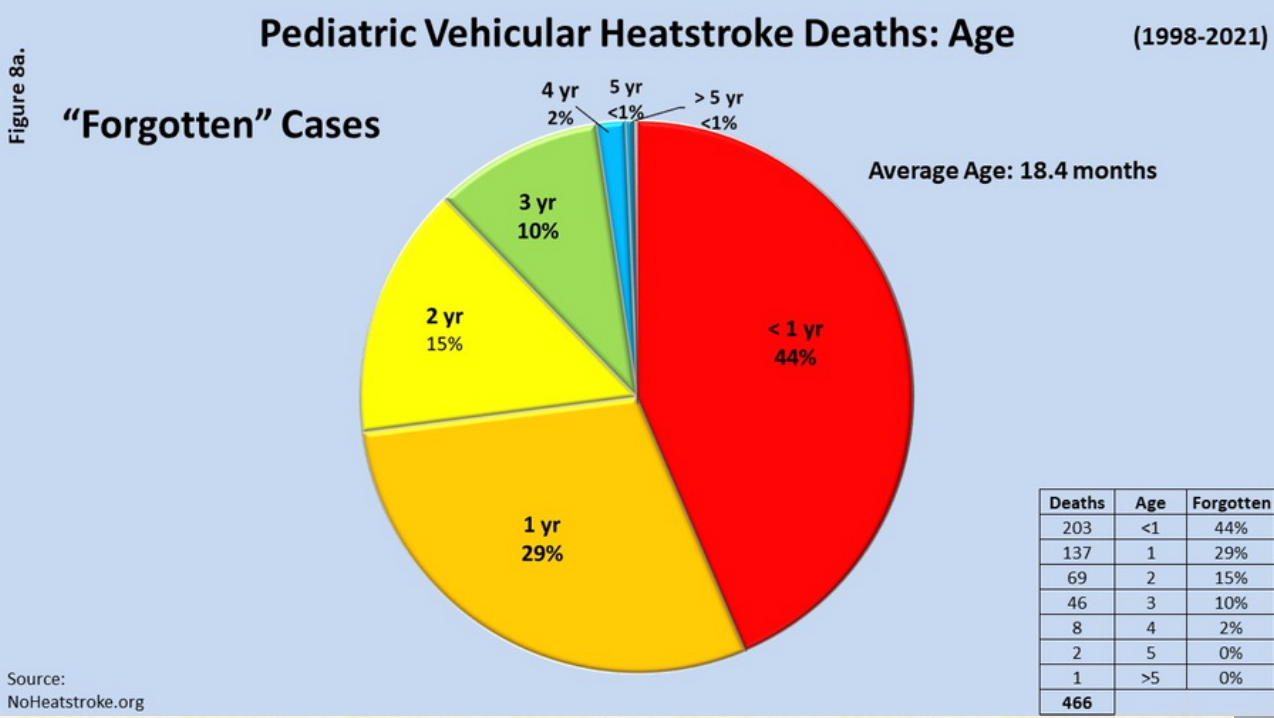
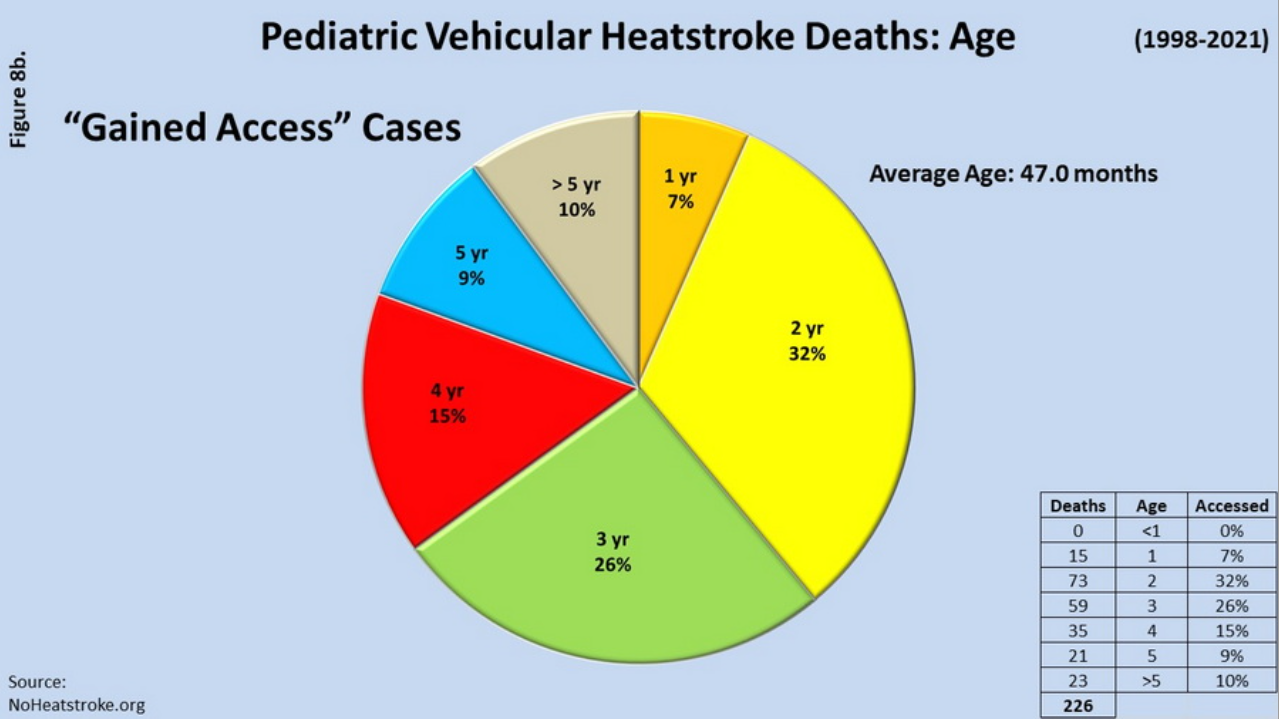

"Forgotten" cases peaked on Thursdays and Fridays, likely due to a change in the routine that resulted in the caregiver forgetting the child in the backseat. "Gained access" cases were highest on the weekends, when the cars are parked at home usually.



In all PVH cases, parents were usually responsible for their child's death, though there are instances of grandparents, other relatives, or even the childcare facility being responsible.
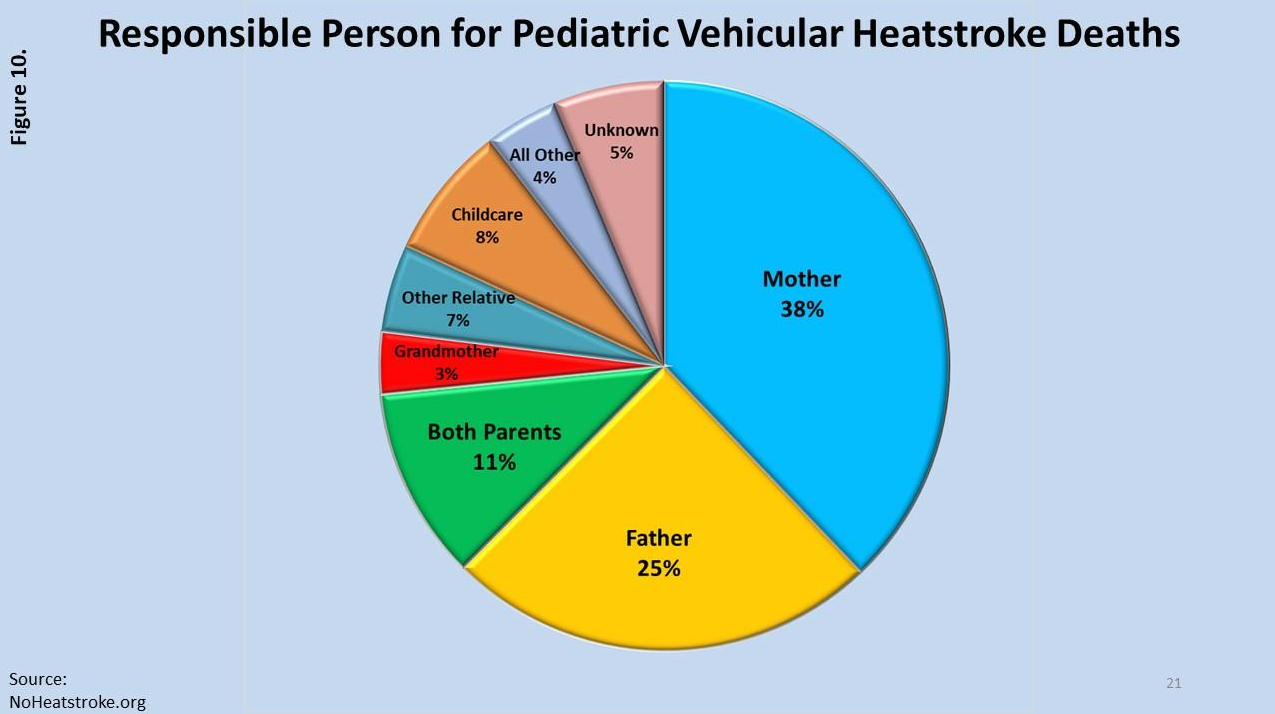



Safety Messaging
The bottom line is this: Mothers, fathers, caregivers — anyone is susceptible to forgetfulness. We live in a fast-paced society, and our routines are often upended at a moment’s notice. It is during these moments of hurriedness and change in routine that many of these preventable tragedies occur. For this reason, it is more important than ever to Look Before You Lock.
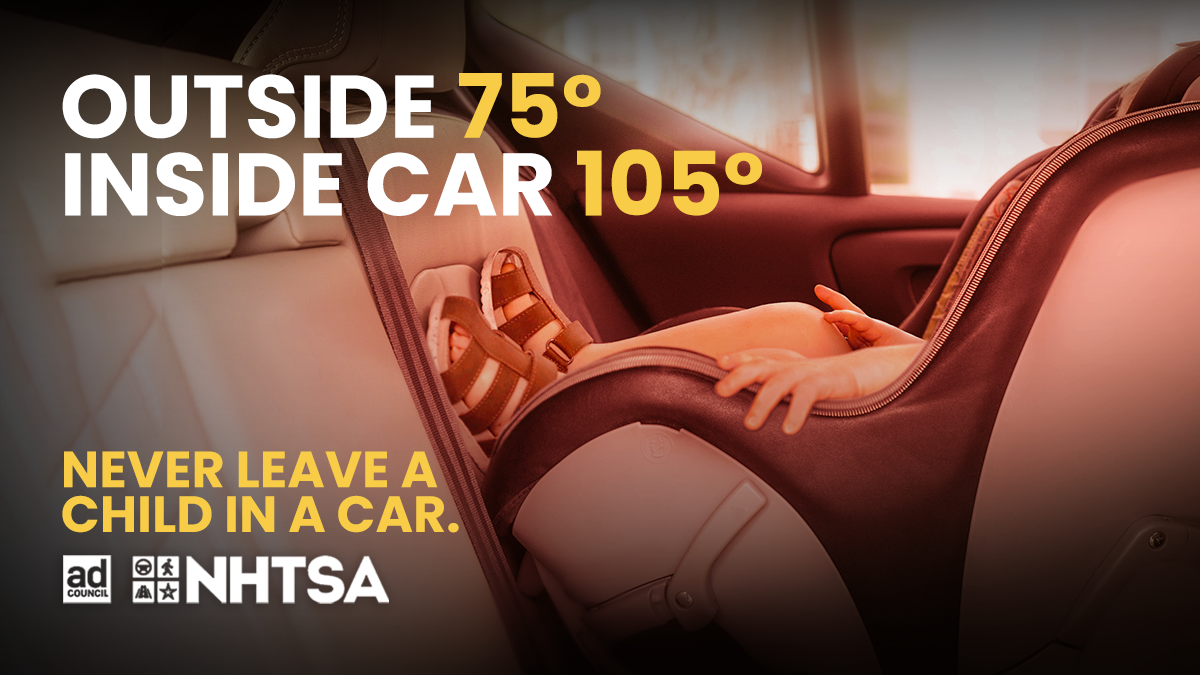

In many cases of Pediatric Vehicular Heatstroke (PVH) where a child is forgotten, their caregivers experienced a change of routine. The brain can easily go on "auto pilot" trying to stick to a routine, and because of this, important things can be easy to forget when you are out of routine. This is why many PVH deaths occur at familiar locations like home or work.


34% of PVH deaths have occurred outside of the summer months (June-August) and a child has died of PVH in every month of the year. PVH deaths can and have occurred at outside temperatures in the 60s and 70s - temperatures many incorrectly believe are too low for PVH to occur.
It's important to look before you lock, but leaving a parked car unlocked can also result in tragedy. 25% of children who died from PVH gained access to an unlocked vehicle parked outside. And while the majority of PVH deaths occur when temperatures are in the 90s, they can happen at cooler temperatures as well.
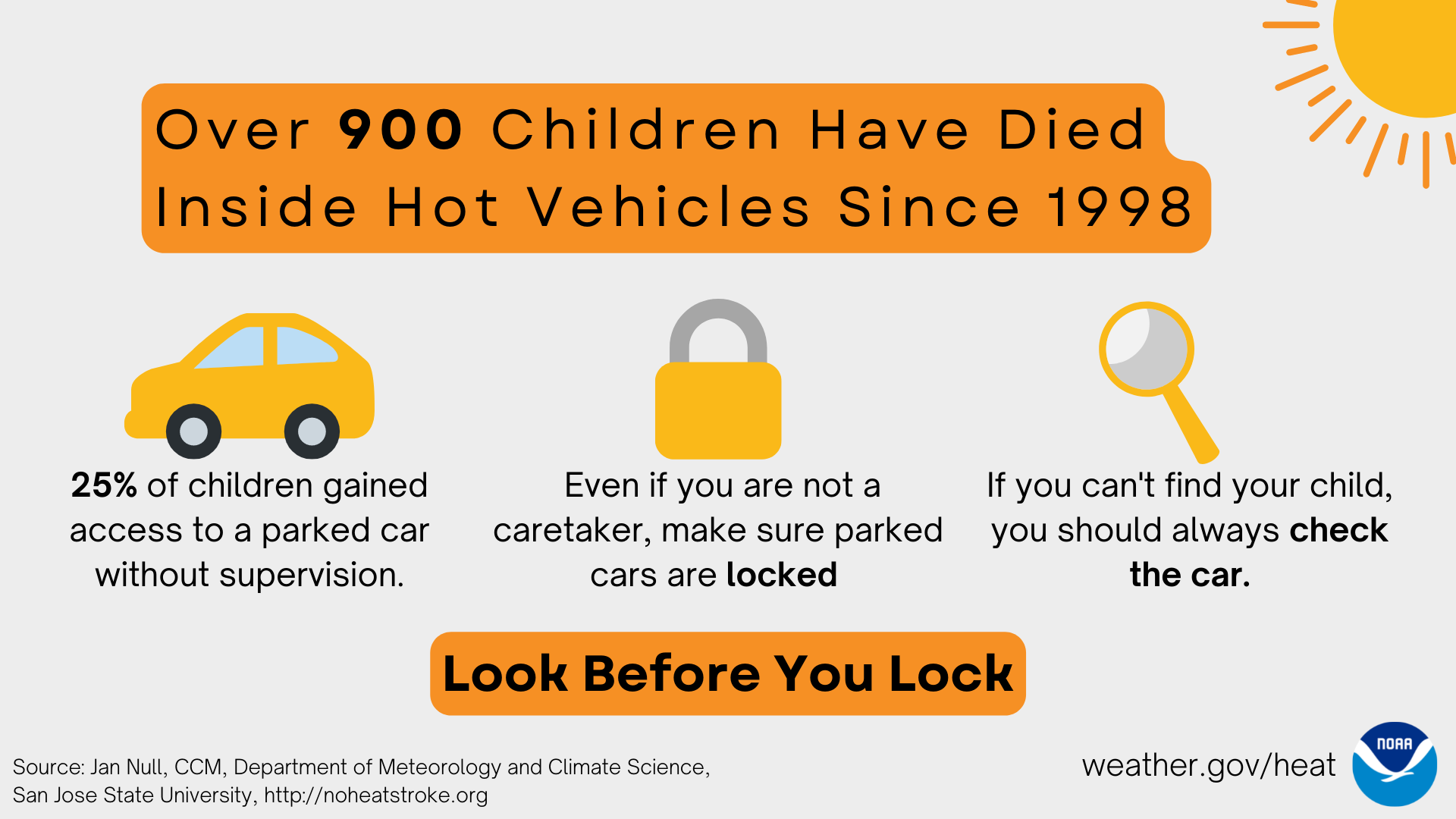

Bottom line: practice heat safety by following these tips below.
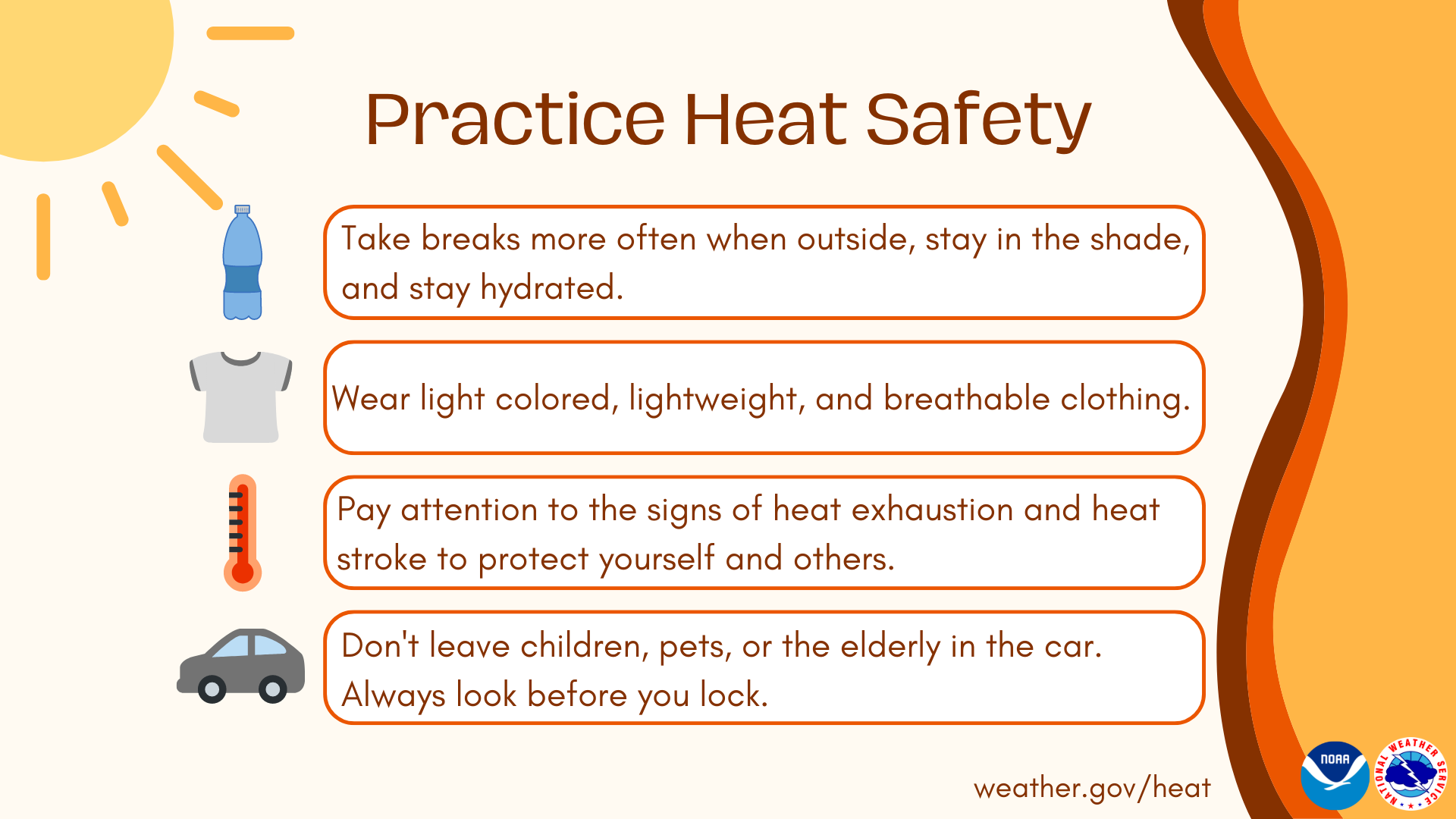

Vehicle Heating Study
The atmosphere and the windows of a car are relatively “transparent” to the sun’s shortwave radiation and are warmed little. However this shortwave energy does heat objects that it strikes. For example, a dark dashboard, steering wheel or seat temperatures often are in the range of 180 to over 200 degrees F. These objects (e.g., dashboard, steering wheel, child seat) heat the adjacent air by conduction and convection and also give off longwave radiation (red) which is very efficient at warming the air trapped inside a vehicle.
80% of the total heat rise occurs in the first 30 minutes, which makes leaving a child in a car even for a few minutes very dangerous. The heating study revealed that on average, the temperature rose 19°F in just 10 minutes, and 34°F in 30 minutes. The chart below reveals the findings over one hour. The temperature inside a car can be over 50°F higher than the outside temperature.

Additionally, the study found that cracking a window had little effect on the interior temperature, with less than a 3°F difference between a cracked window and the windows rolled up. The biggest factor to how fast a vehicle heats up is likely the interior color - a dark interior will heat up much more quickly than a lighter interior.
Summertime is the peak season for these tragic incidents, but heatstroke can occur in outdoor temperatures as low as 57°F. Heatstroke fatalities have occurred even in vehicles parked in shaded areas and when the outside air temperature was 80°F or less.
What is Heatstroke?
Heatstroke is clinically defined as when a person's temperature exceeds 104°F and their thermoregulatory mechanism is overwhelmed. Symptoms of heatstroke include dizziness, disorientation, agitation, confusion, sluggishness, seizure, hot dry skin that is flushed but not sweaty, loss of consciousness, rapid heart beat, hallucinations.

When a core body temperature of 107°F or greater is reached then cells are damaged and internal organs begin to shut down. This cascade of events can rapidly lead to death. Children's thermoregulatory systems are not as efficient as an adult's and their body temperatures warm at a rate 3 to 5 times faster than an adult’s.
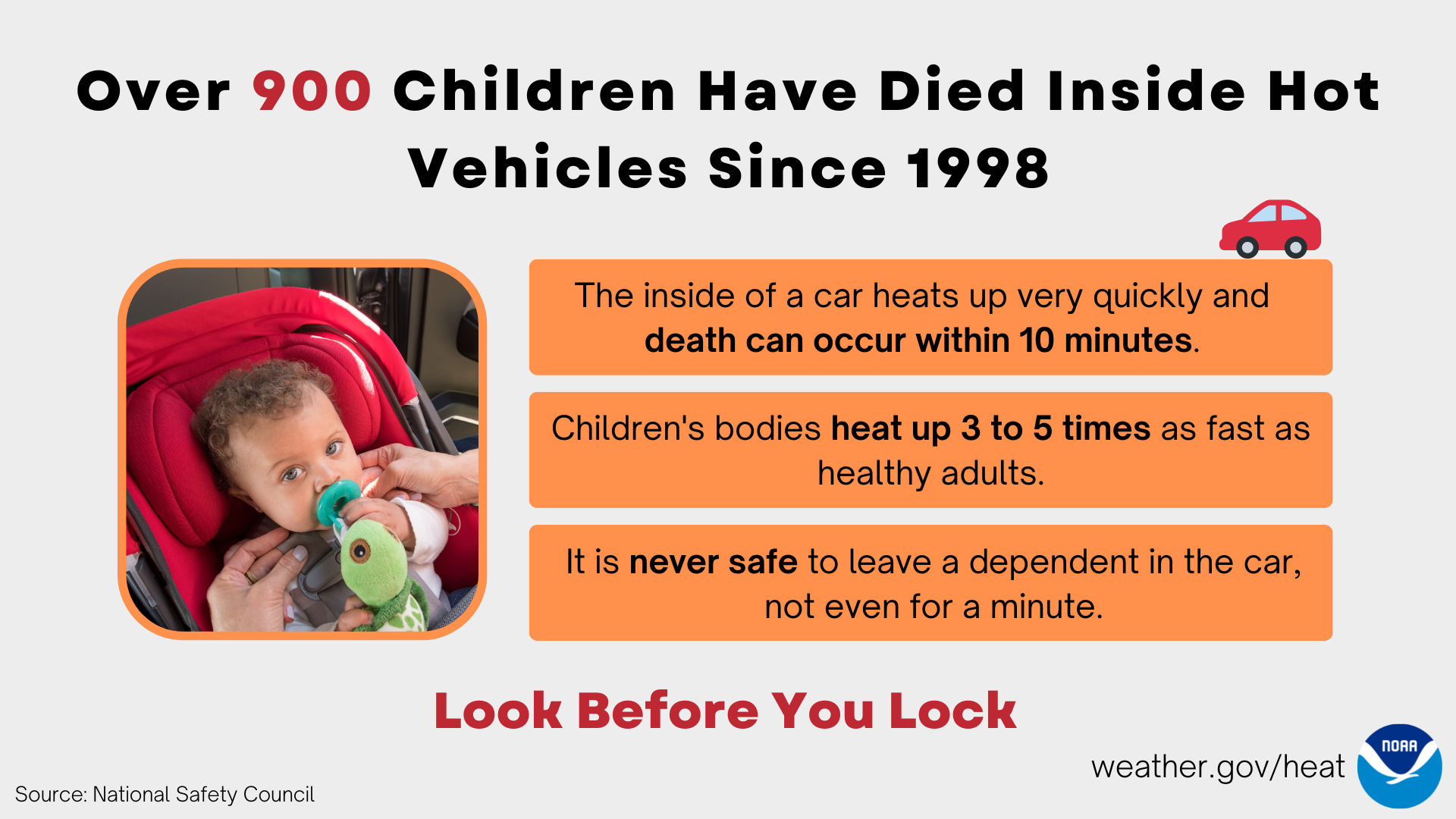
Good Samaritan Laws
'Good Samaritan" laws, which most states have in one form or another, generally provide basic legal protection for those who assist a person who is injured or in danger. In essence, they protect the “Good Samaritan” from civil and/or criminal liability if unintended consequences result from their assistance.
In recent years, 23 states have written laws that specifically add language offering at least some protection to persons who enter a vehicle, even by breaking a window, to "rescue" a child. It should be noted that there may be additional limitations such as requirement to call 911 first. Indiana and Kentucky have Good Samaritan laws, but it is important to understand the laws to protect yourself. You can read about the Kentucky and Indiana legislature here.

If you are a bystander and see a child in a hot vehicle:
 |
Media use of NWS Web News Stories is encouraged! Please acknowledge the NWS as the source of any news information accessed from this site. |
 |